We are so intent on website metrics that sometimes it hurts. More visitors, please! All we want is more visitors but how can we use metrics data to make that happen. There are tons of services providing us with useful information about the sites. It’s important to pay attention to those factors that matter most. This article will focus on bounce rate and how to improve bounce rate. For a long time, it was and still is one of the most confusing indexes because it presumably does influence the ranking (but no official confirmation has been issued) and has a significant impact on how our website is perceived by users.
Before we go into more details let’s find out what bounce rate is? Of course, there are official definitions of the term, and you can always look it up on wiki or elsewhere. To put it simply let’s say that some random user has found your websites and he/she visited one page and left. This action is considered as a bounce. It doesn’t matter how long they stayed on the page. The user hasn’t clicked on any other link nor has he/she moved to any other page. It does have a lot of flaws but still reducing bounce rate is considered as one of the most important tasks for webmasters and SEO specialists.
Contents
What is a good bounce rate?
Pandora box has not been opened yet. Some SEO specialists claim that 70-80% bounce rate is a good sign, but some say that it’s horrible and you should immediately run screaming and do something about it. There is no certainty and are too many factors (what kind of website do you have, content, product, service, etc.) to announce THE perfect bounce rate.
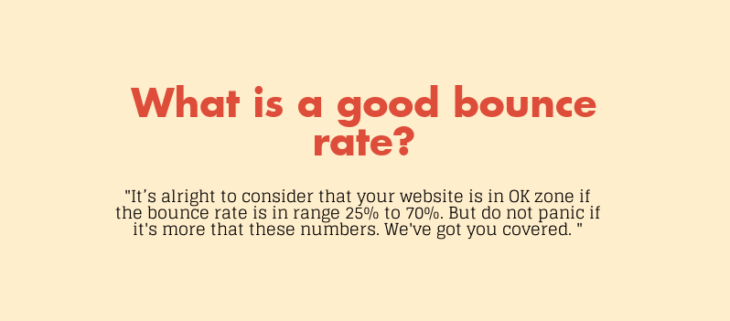
However, let’s focus on average bounce rate and what it can tell you. According to some website analysis, it’s alright to consider that your website is in the OK zone if the bounce rate is in the range from 25 % to 70%. Let’s face it, 25% is soooooo rare that it can be unreachable. As always, something in the middle is good.
What is a high bounce rate? Well, if your index is showing more that 90, you are in trouble. No need to panic if you have a high index. There are always ways to reduce bounce rate. We will stick to the main options that can improve. Keep your mind in peace and continue reading, it’ll be helpful.
6 Ways to reduce bounce rate
Page load time optimization
Everybody wants websites to load FAST. This is especially applicable to mobile devices. It’s hard to believe, but there are still tons of websites not optimized for a mobile version. Yeah and we wonder why people just leave it and don’t wait.
A few milliseconds difference and you lose a visitor. Page Speed Insight from Google is setting new standards for desktop and mobile. A score under 50 out of 100 is not good. Check your score and see what improvements can be made. It will definitely make your website more attractive for users and influence your good bounce rate. Don’t underestimate the significance of page load time. Remember how many times you closed a website just because it took it too long to load. Pretty sure that everybody had that kind of experience.
With the help of page speed checker, we can see what features can be fixed and see the result right away. It shows Desktop version and Mobile.
This is an example. We can see the GitHub is fully optimized and has an excellent score for a desktop. There is also one interesting advice. If you have too many ads on the page, it will definitely slow it down. So in order to make your page fast, you’ll need to optimize your ads too. Keep that in mind when you fix load time. Let’s take a look at Mobile version.
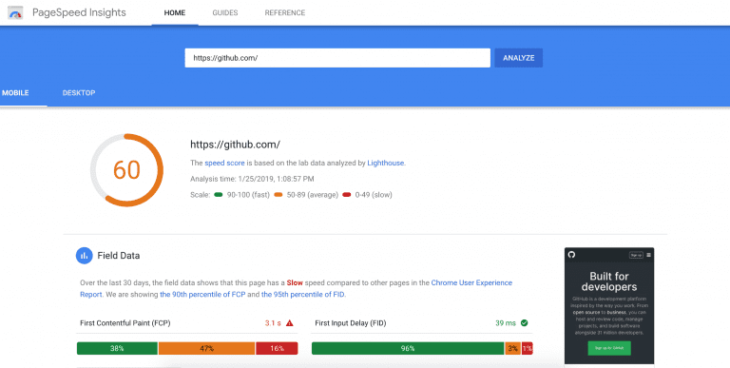
As you can see Mobile score looks different. We checked a few websites and it looks similar to what you see here. It’s harder to optimize mobile pages. But it’s not like we can get rid of all ads and be happy with a high score. We need our income. So don’t be too harsh on yourself, just make the most of your speed. Maybe this will help you understand how to lower bounce rate.
How to reduce bounce rate most effectively?
Widgets
This is a favourite option of many webmasters. One of the easiest ways to attract visitors and make them stay is to use widgets. It will definitely give you a good bounce rate. This will give people an additional reason to stay on your website longer and explore. E.g., currency converter widget is a simple tool to make currency conversions, but it can definitely make a difference. Using every opportunity to invite more attention is our goal. Choose a relevant widget/plugin. Look closer and you can figure out what the websites lack or can spark interest. Small tools will bring more interaction and people most likely will return to your site because you have something worthy of their time.
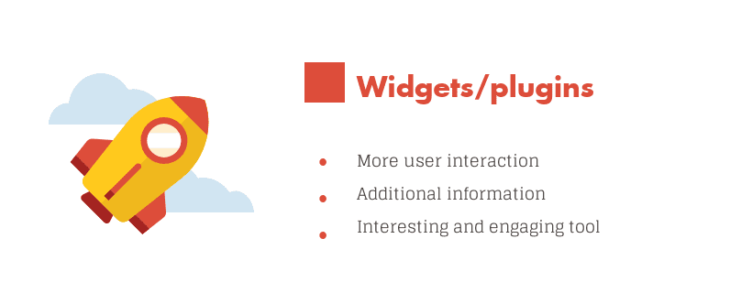
There are tons of plugins to choose from: weather, conversions, statistics, news, a professional tool (e.g., for developers, SEO, editors, etc.), languages and many more. Wordpress currency converter widget can be used for WP users. Don’t think that there are no options for different website platforms. The search process will take some time, but it will work. Reducing bounce rate is our end goal and widget for sure will do that. It’s eye-catching and will be an effective addition to your website.
Intuitive layout and call to action
The Internet is flooded with websites of different kinds. Being unique is a challenge. Simple ideas presented intuitively and simply can make a difference. People value coherent design. Trashy, overwhelming websites are going to bring you down. Make it clear, show important information and try not to OVERDO it. As we say keep it simple. Do not forget about interlinking. A few references and links to other pages on your site will help users find information quicker and easier — no need to confuse and annoy your visitors with info overload.
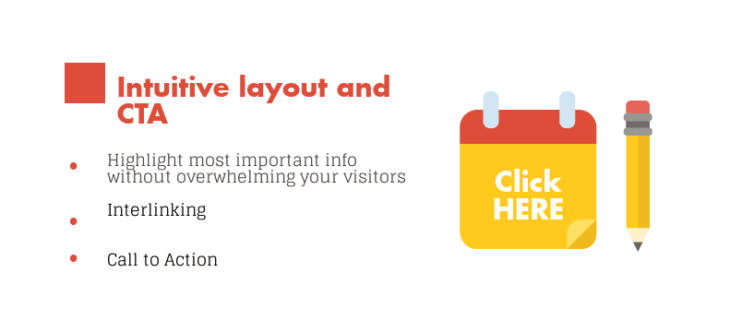
The important feature is Call to Action (CTA). Visible buttons that are going to stand out and prompt to click on it. Again be very selective with what you highlight. Too much and people will lose interest and will not stay to puzzle out what you were trying to achieve and represent with your flashy buttons.
Unique Content: Text VS Infographics
Say ”No” to rewriting. Unique content is key to success. Be creative with information on your website. Everyday knowledge wrapped into interesting cover can be it for you. The Internet is overloaded with similar information, just written in different ways.
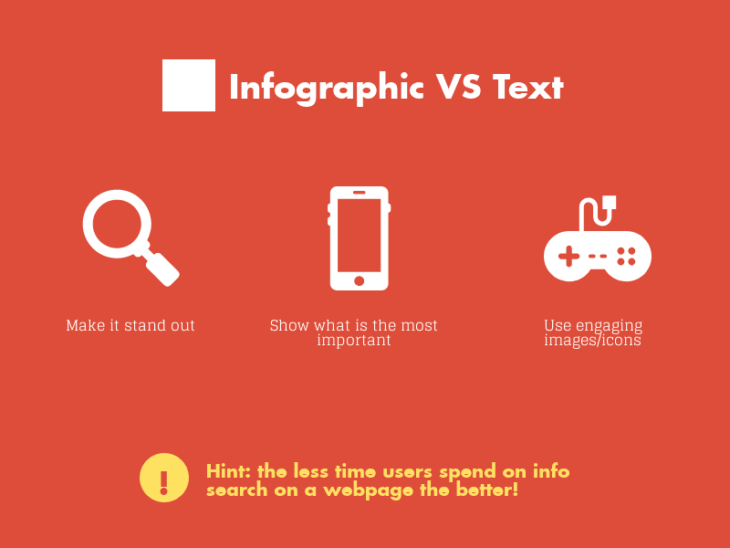
It’s ok to use some other resources as examples but you have to come up with something on your own. If you don’t, people will dismiss your service as not relevant. Some studies show that people don’t like to read a lot. It’s better to use more interactive ways to engage. E.g., infographics are holding the most important info and easily shows what the visitor needs to know without text overload. It’s less time consuming and can lead people to click around your website some more.
Mobile optimization (responsive design)
This one can be tough. If you are not an IT person and just have a blog, for example, it’s hard to make this kind of changes. But you can make it happen then do it. A mobile platform is dominating the market now. We need to know how to lower the bounce rate?
If you want to be at the top, you must use responsive design, you must optimize your websites and make it attractive for mobile users. It’s a must-have for all webmasters. Do you personally like to visit clustered pages and see when blocks and parts of website slide away or appear in weird places of the screen? Nope, definitely not. Don’t make that mistake because it will definitely lead to user disappointment.
Conclusion: Previously mentioned methods can help you answer the question “what is a good bounce rate for a website” and engage more users. Some of them can be easily implemented, but some of them require time and effort. If you don’t have time and resources, the best way to reach an average website bounce rate is to place a widget on your website. First of all, it’s easy, no special skills are required. Of course, it will take some time to find the perfect one, but when you do, it’ll increase user interaction. Hope you’ve enjoyed this article. Cheers and let reducing bounce rate be a simple task.
